It’s always best to let the dust settle and reflect a little bit before providing an opinion on this team.
It was an emotional week that ended in the Toronto Maple Leafs getting eliminated in the play-in round, which wasn’t even technically the playoffs. Compounding matters, this is the fourth year in a row the team has lost out in the first round. In any market, that’s going to raise questions, but in Toronto, the scrutiny is even more intense and so is the demand for change.
In his end-of-season media availability, Brendan Shanahan made it clear that his two main people in charge – GM Kyle Dubas and Head Coach Sheldon Keefe — are going nowhere. Elliotte Friedman wrote in the aftermath that, “The results must change or the front office will.“
Not everyone will want to hear that (on both sides of the ledger), but it’s fair all around. Mass firings in a strange season like this are not even remotely reasonable. Friedman also reported, “I think GM Kyle Dubas’s plan was to give Toronto’s “Big Four” (Mitch Marner, Auston Matthews, William Nylander, John Tavares) one more season, no matter what happened in this year’s playoffs.”
That said, a fifth season without a playoff round win will have to bring about change — change that either comes at the top of management, or at the top of the player salary list.
A common refrain I’ve heard about the team’s management recently is that Kyle Dubas was saddled with some burdensome contracts and a bit of a “mess” to clean up when he took over the reins as GM. While he wasn’t walking into a completely perfect situation, he had Matthews, Marner, Nylander, Morgan Rielly, Nazem Kadri, Frederik Andersen, and a collection of good, useful forwards (Connor Brown, Andreas Johnsson, Kasperi Kapanen, etc.) on the roster. The foundation was more or less there, and he was a part of building that foundation in the first place.
There are 32 positions like this in the world — who is walking into a perfect one? It certainly wasn’t a situation where we expected two additional first-round losses to follow.
This will be the cleanest slate Dubas has had to build a roster in his image, though. Essentially all the contracts on this team are his doing. There is no Patrick Marleau or Nikita Zaitsev-type contract to deal with. And there are no big contracts to negotiate.
But boy are there problems he is going to have to solve. Let’s take a look at it by position.
Goaltending
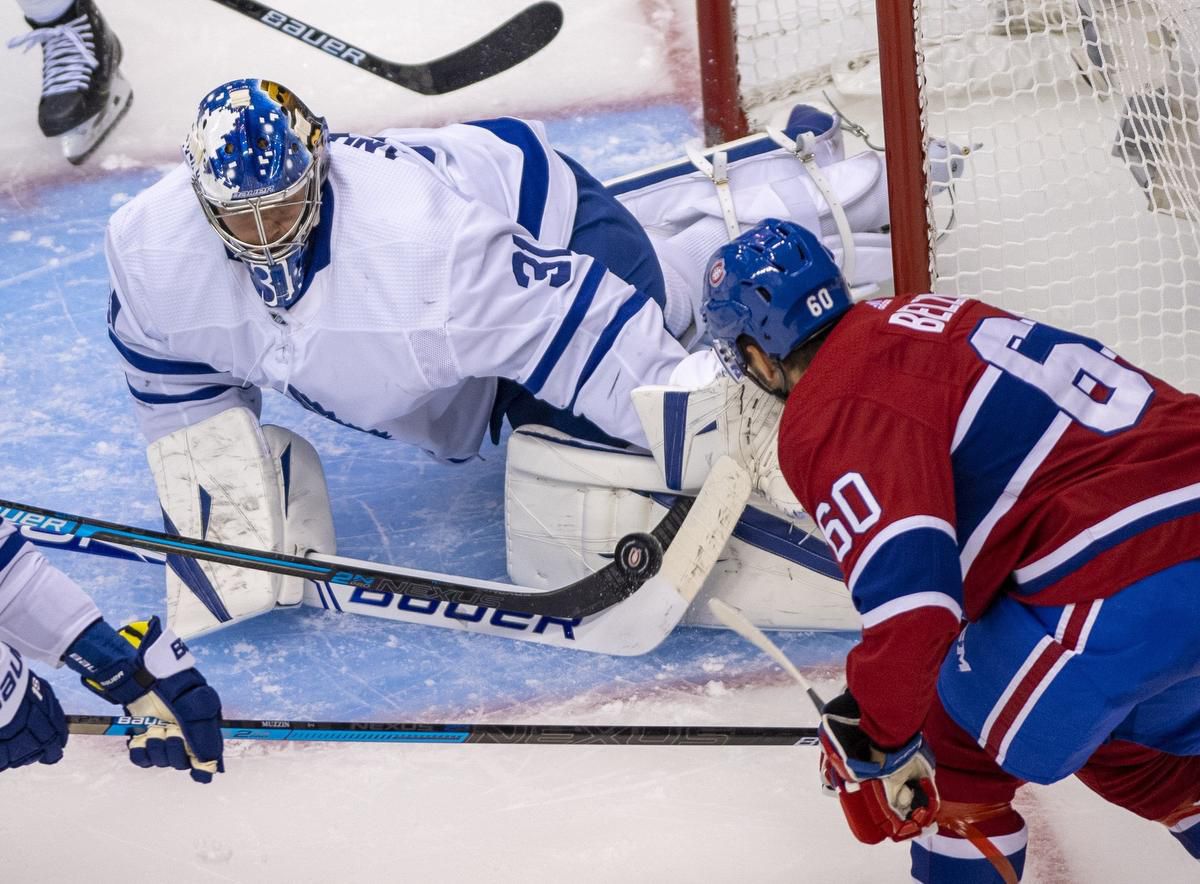
You could argue that the Leafs are set in net, and they most likely are — both Frederik Andersen and Jack Campbell are proven and signed into next season.
In the last few years, Dubas tried to address backup goaltending on a budget. It was an unmitigated disaster. This past February, it was finally corrected and Campbell was solid upon arrival. Under contract for two more seasons at a $1.65M cap hit, he hasn’t given any reason to look elsewhere at this point.
Andersen, on the other hand, is a huge question mark. He’s turning 31 this year, has one year left on his contract, and is coming off his worst season as a Leaf. He had a .909 save percentage in the regular season and inexplicably struggled for long stretches of the season. At one point, fans were calling for Campbell to start over him, and whether or not Keefe was going to do it was a legitimate question.
Andersen’s playoff stats will show a .936 save percentage; for the most part, he was good, but in Games 1 and 5, he let in really bad, back-breaking goals — and that has become routine for him.
It will be hard to trust Andersen at this point, but what’s the alternative? Trade him for pennies on the dollar, probably taking a bloated contract back in return? Eat some of his money to move him, and then pay up for a free agent goalie like Braden Holtby, Robin Lehner, or Jacob Markstrom (assuming they even make it to free agency)?
It can be done, I guess, but it’s difficult to see how they could both save money and notably improve in net. The best bet might be to stick with it for the year, stop playing Andersen so much, and hope the extra rest will make him better when it counts. We have seen a number of goalies’ workloads reduced when their backups were dependable who improved because of it (Holtby is one, Henrik Lundqvist another).
Defense

We’ve had the same old discussions here for years now: Who is the shutdown pairing? When are they going to acquire an additional top-four defenseman and also improve the depth? How many more years will Martin Marincin be the seventh defenseman called upon when injury inevitably strikes?
Morgan Rielly, Jake Muzzin, Justin Holl, and Rasmus Sandin are all under contract. Timothy Liljegren, Calle Rosen and the aforementioned Marincin are, too. Travis Dermott is an RFA, and management will have to make some sort of decision there (probably a bridge contract or a trade). If they do bring back Dermott, five of their six starting defensemen are likely set — but that group is not looking that strong or defensively sound.
Yesterday, Friedman floated the possibility of bringing in a physical defenseman like Radko Gudas or Mark Boroweicki. Gudas would make all kinds of sense as a good, right-handed defenseman with some snarl. He’s not enough, though, unless Sandin/Dermott take a step.
The Muzzin – Holl pairing was good enough that you would feel okay counting on them going into next season. Holl was a bit disappointing for me in the playoffs; he was generally unnoticeable — he wasn’t bad, but he wasn’t doing much in terms of impacting play. Improving at the top of the blue line and bumping Holl down would be a nice gain for the team.
Rielly seemingly has not played next to a good partner in his prime at any point (he and Jake Gardiner did have that one stretch together). Finding him one, or bumping Holl down with an upgrade, would go a long way.
Adding a veteran depth defenseman would also be good insurance. They have options at the bottom of the roster right now, but those options primarily involve banking on young kids to develop, and hope isn’t a plan.
Forwards
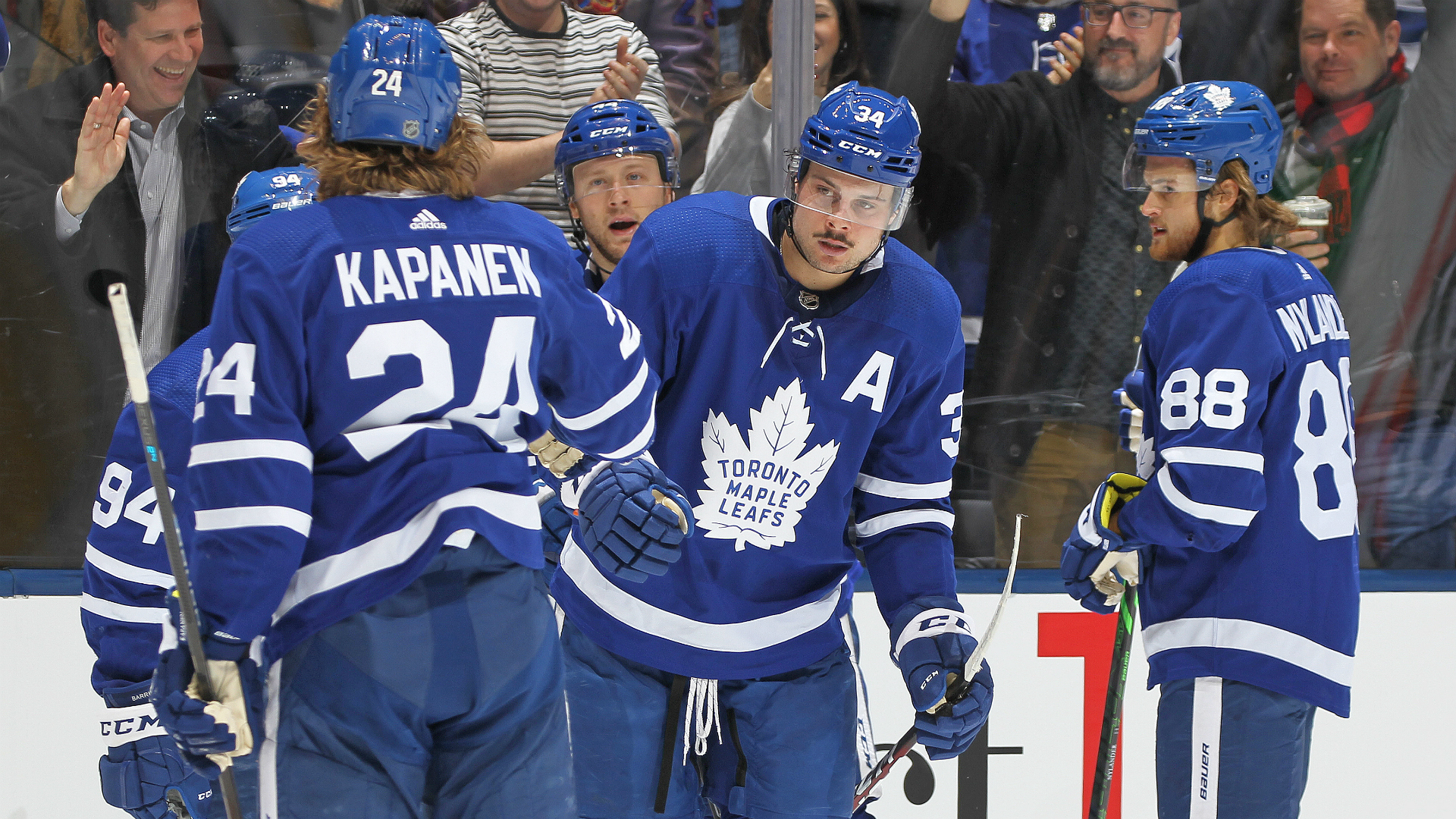
If we’re sticking with the Friedman report of the “big four” returning for at least one more season, the question becomes: What are they going to surround them with?
For years now, I’ve asked the same question: What is the point of the team’s bottom two lines? They are obviously going to be worse than the top two lines… but they aren’t any different in their makeup. Clifford was the first mix-in of actual physicality there in a few seasons, but the third line is an offensive line on a team whose top two lines are already offensively oriented.
This team isn’t the prime LA Kings team with Anze Kopitar going toe-to-toe against the oppositions best and outplaying them, whereby a scoring third line makes a ton of sense. Wouldn’t it be helpful to have a third line that can take some of these defensive responsibilities off of the shoulders of the top guns so that they can focus on scoring?
Leafs management has shown no inclination to do so – the third line for most of the playoffs was Robertson – Kerfoot – Kapanen, and they were completely sheltered. The fourth line barely played in most of the games. They are asking the top two lines to do everything at the moment.
Either the top lines get better at handling these matchups – and they are in a division where you’re probably playing against the Bergeron line or Point line in the playoffs in the first round – or they diversify the group and put together a bit more of a traditional checking line that can take some shifts and mix up the matchups. The playoffs are all about matchups, and the Leafs don’t really have many options when they look down the bench. That’s how you end up stacking one line at the expense of the rest of the lineup.
The Leafs have nine forwards under contract while Mikheyev, Frederik Gauthier, and Denis Malgin are RFAs. They also have Nick Robertson. Clifford and Jason Spezza are UFAs, and it sounds like there is an appetite to bring both back.
Clifford, in particular, added a different element to the team and is a much-needed veteran. Spezza put together a good season and can still produce – the Leafs seemed to love his veteran presence as well, but he’s a one-dimensional player at this point. If the team brings back both, the forward group would basically be set, unless there are additional trades — and is that good enough?
A word of caution: I have seen a ton of vitriol towards Kapanen after the playoffs, and I think it could be a mistake. He had a bit of a down year, but he played with a rookie and a center who probably shouldn’t be playing there full-time. What was the expectation?
Kapanen can kill penalties, his speed is a weapon, and he’s one of the only Leafs that can forecheck and bring physicality. They should support him better if anything.
We confirmed this season that Kapanen can’t play left wing, and that’s fine. He’s a good third-line right winger. We’ll see what Leafs brass does with Johnsson and Kerfoot as well as mid-range-salary players that appeal to other teams.
Coaching
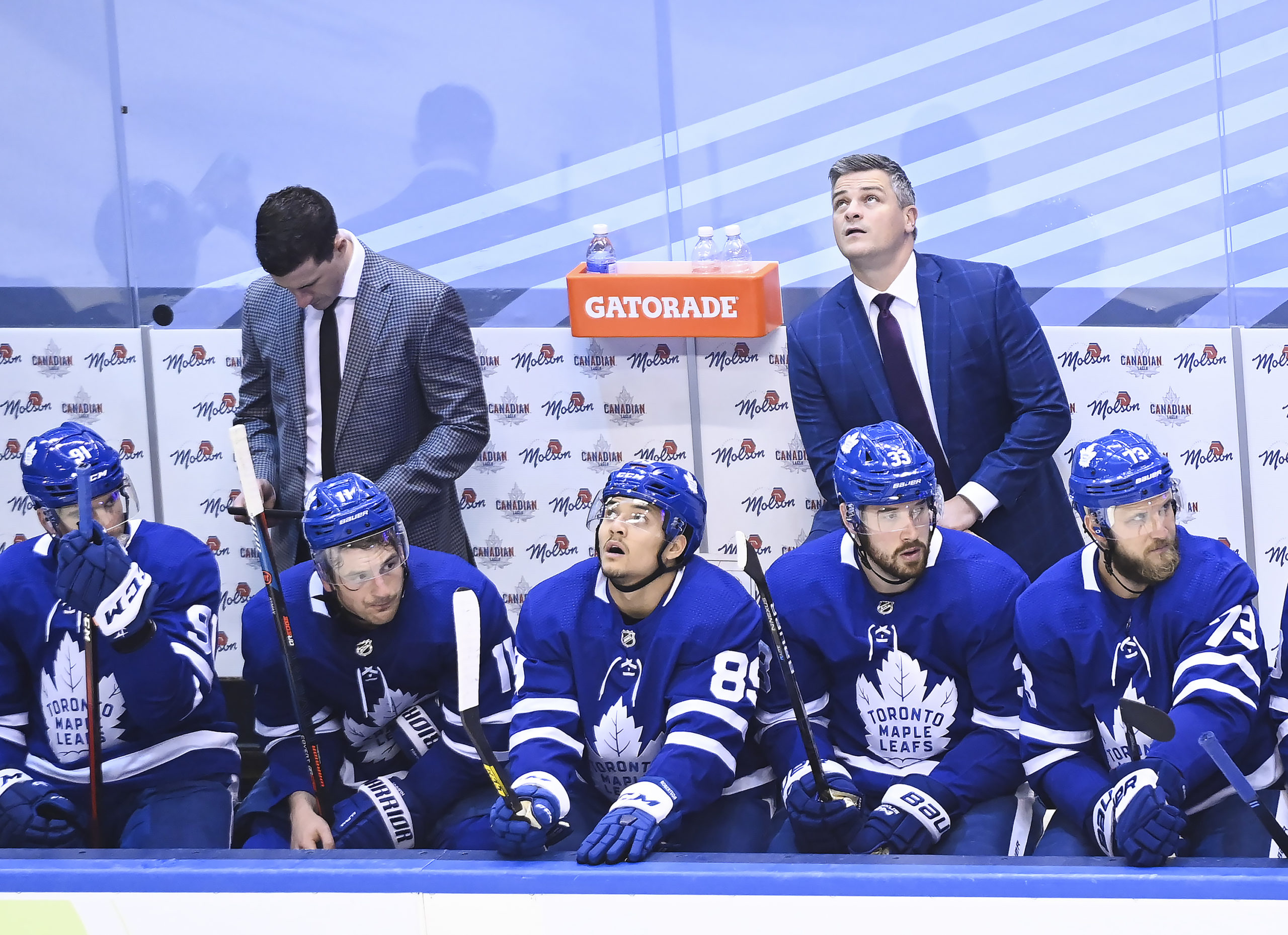
Where to start with this one? Mike Babcock started the season and tried to implement a number of tactics that had been talked about over the past few years in Toronto – tight breakouts, no cheating for offense, play more of a cycle game to create in-zone offense, and learn to grind out more wins. The team was not having it.
It is often forgotten, but the Leafs were also missing a number of key players at the beginning of the season – John Tavares, Mitch Marner, Zach Hyman, and Travis Dermott were all out at points during Babcock’s final stretch. They were on the verge of digging too big of a hole to make the playoffs. Babcock was, as we all know, consequently let go.
The team almost instantly got healthy and went on a huge run — which was not really surprising, as most teams experience a “new coach bump” when a change is made in the middle of the season. Plus, they returned to health and have a good roster.
Other than the new coach bump, though, the team generally didn’t look good. From January 1 through to March 11, they were 19th in the league in points percentage. They were consistently plagued by poor goaltending and defensive breakdowns (plus some key injuries on defense), and the backup goalie situation became so dire that Dubas finally traded real assets to address it.
The team regrouped more, the power play had some life — then fizzled out again — and the penalty kill was good when healthy. There are legitimate questions from the short playoff: The top players were routinely overplayed and gassed. The bottom of the roster was often forgotten. John Tortorella got his matchups at will, and the lines were reconfigured to more easily play into his hands. Nylander moved to center, which was a mistake (I know Nylander said he wanted to, but he’s not the coach…). We saw line combinations that we’ve never seen before — and it showed. At 5v5, the Leafs struggled to score and were saved by their play with the man advantage.
At the same time, there were positives. Keefe experimented quite a bit — and for long stretches instead of random periods or shifts. The offense was revived. There were a few games where the team played the famed puck possession style they always talk about, and it looked great.
You can’t fully judge a coach coming in halfway through a season — one that was interrupted by a pandemic, no less. There was some good, and there was some cause for concern, or at least hesitation. Next season, Keefe will have his first full season to implement his vision for the team.
The exit of Paul McFarland also gives the Leafs an opportunity to hire a new power play coach — and that is needed. The power play struggled for long stretches this season and clicked at just 15% in the playoffs. That’s an important hire to keep an eye on.
Management
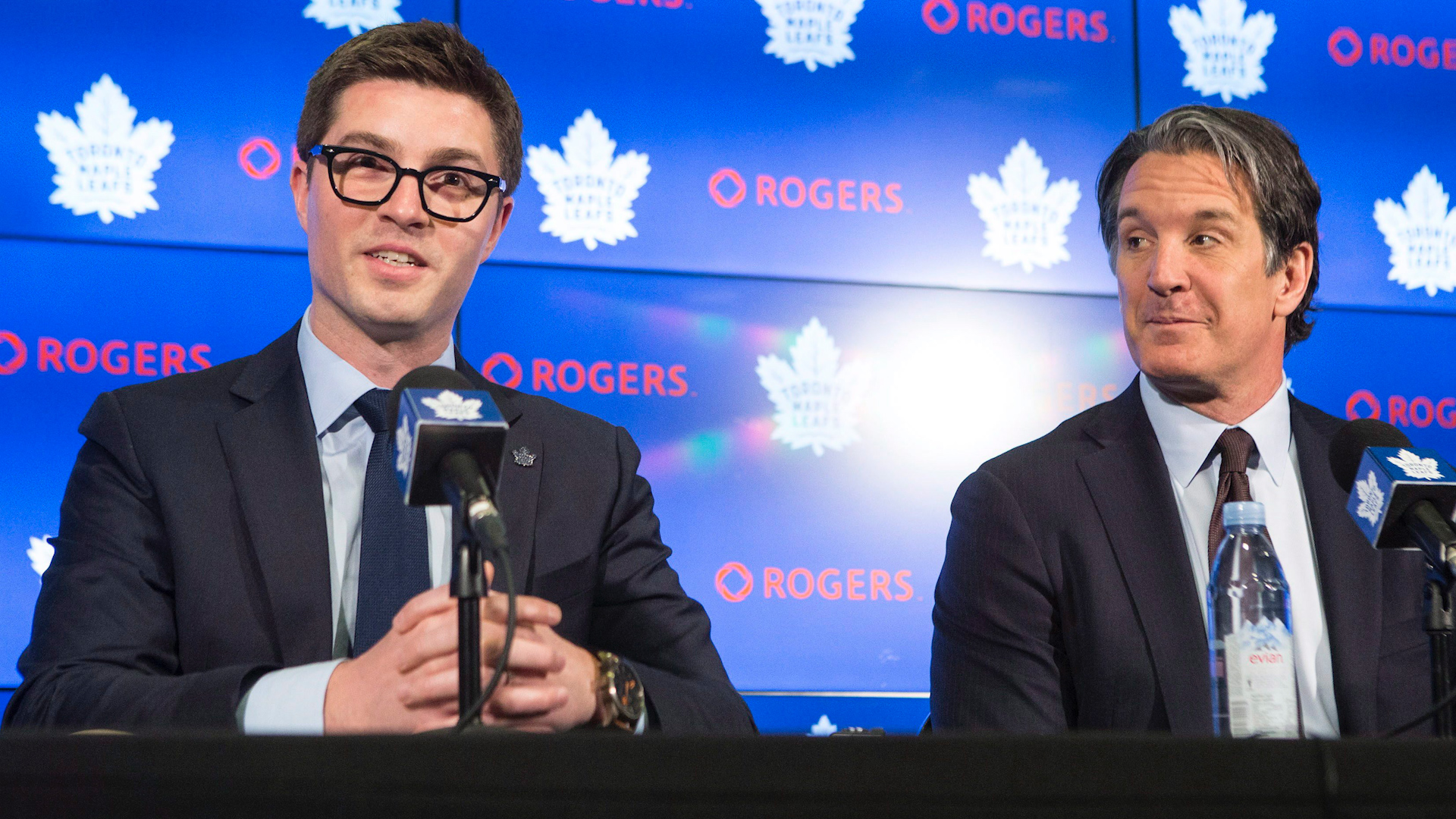
I thought Brendan Shanahan was excellent in his end-of-season interview. One quote particularly stood out; while I didn’t get the sense patience is running thin, the sense of urgency was really there when he said, “Again, like we’ve talked about, words are not going to fix this. Us talking here today, we understand the importance of it and that people want to hear from us, but the things we say today are not what is going to get this thing done.”
Pierre LeBrun recently wondered if Shanahan was going to get more involved, and you can kind of see why – Shanahan was one of the best power forwards of all-time, and this is the product he is overseeing? I have no idea what more Shanahan involvement would really mean, but the heat is really on now. How likely is he to just standby and evaluate all offseason and through the next season?
Kyle Dubas conducted himself much differently in his interviews. He was a bit cagey and very defensive – the Cody Ceci defenses need to stop, and sitting there touting mystery-box stats that nobody knows of as the reason he is good (you just don’t know it because you can’t see our stats!) is not a great look. Even if you believe it, keep it to yourself. If you do actually have a competitive advantage, keep quiet about it and keep people guessing.
The Mitch Marner contract comparisons he referenced were weird at best.
Ultimately, I don’t really care about his interviews or veiled references to Twitter arguments. He’s had some great moves – the Jake Muzzin trade, the John Tavares acquisition — and some questionable ones like the Nazem Kadri trade, the RFA contracts, and the Marleau trade (just based on the price paid to move him).
Now two and a half years into his GM tenure, he needs to improve the defense, balance the forwards, and win at least one round in the playoffs next year.


![Sheldon Keefe on the Maple Leafs’ struggling power play: “[We’ve scored] one out of 11 high-danger chances in tight to the net… We have been in those spots and haven’t converted” Sheldon Keefe, playoff press conference](https://mapleleafshotstove.com/wp-content/uploads/2024/04/keefe-pc-game-3-218x150.jpg)
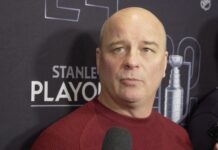
![Jim Montgomery Post Game, Bruins 4 vs. Leafs 2: “[Marchand] still manages to get under people’s skin, yet he doesn’t cross the line” Jim Montgomery, Boston Bruins post game](https://mapleleafshotstove.com/wp-content/uploads/2024/04/jim-monty-pg-to-218x150.jpg)
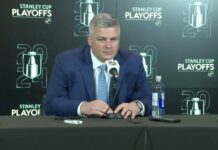



















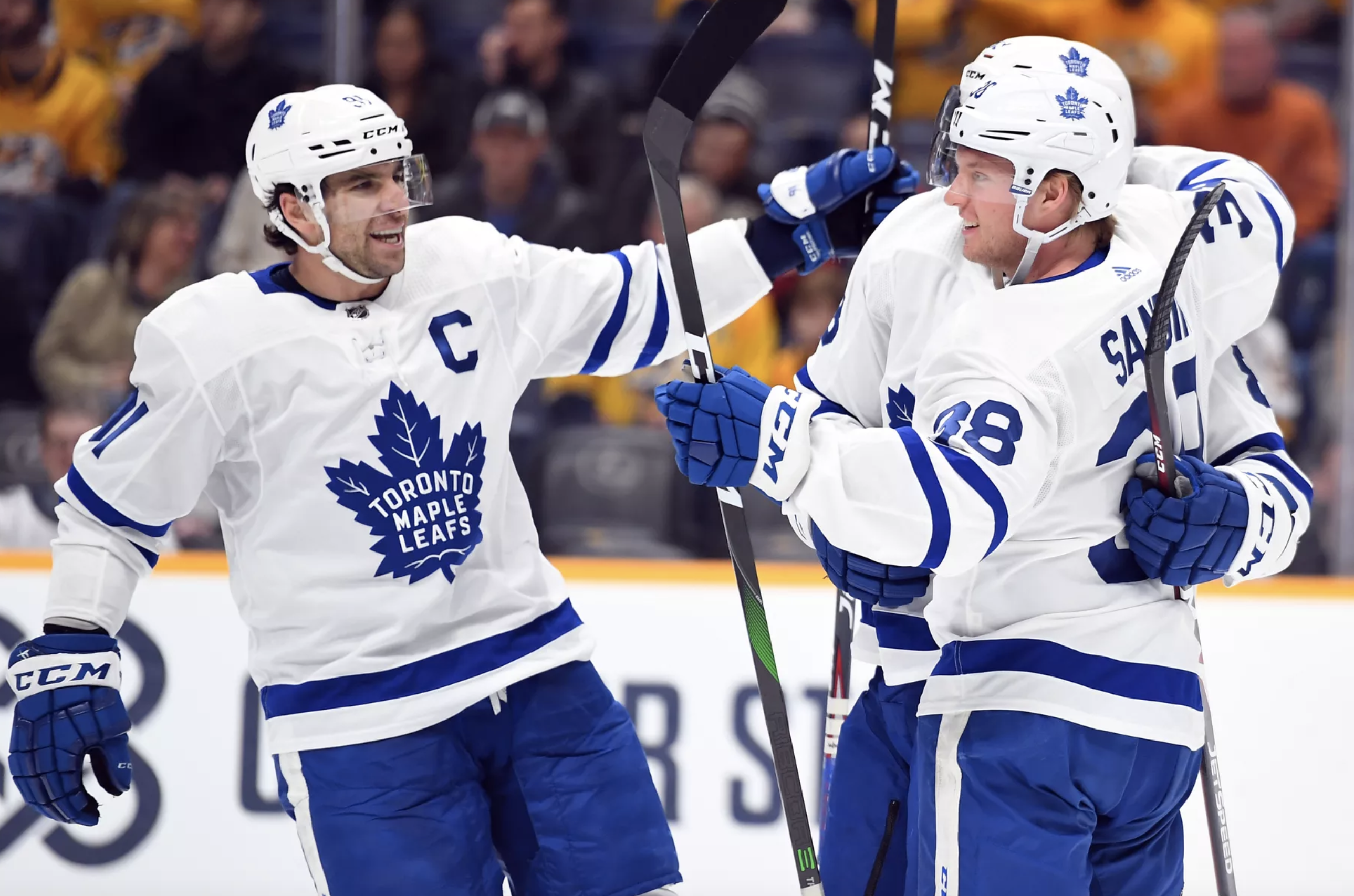
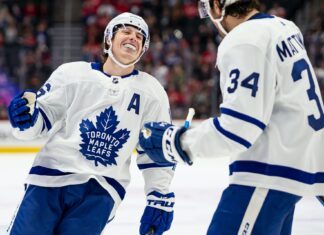

![Sheldon Keefe on the Maple Leafs’ struggling power play: “[We’ve scored] one out of 11 high-danger chances in tight to the net… We have been in those spots and haven’t converted” Sheldon Keefe, playoff press conference](https://mapleleafshotstove.com/wp-content/uploads/2024/04/keefe-pc-game-3-100x70.jpg)



![Jim Montgomery Post Game, Bruins 4 vs. Leafs 2: “[Marchand] still manages to get under people’s skin, yet he doesn’t cross the line” Jim Montgomery, Boston Bruins post game](https://mapleleafshotstove.com/wp-content/uploads/2024/04/jim-monty-pg-to-100x70.jpg)

